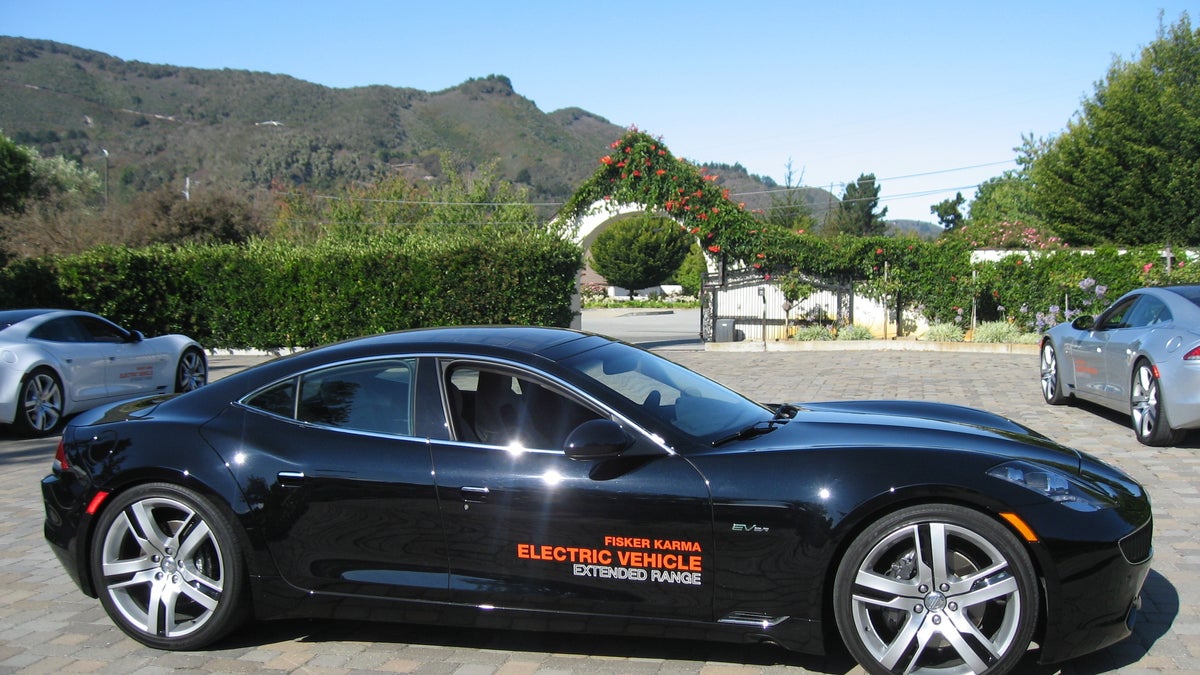Fisker Karma shows Concours d'Elegance the future
During the Pebble Beach Concours d'Elegance weekend, we got a chance to drive the Fisker Karma, a car that looks decidedly forward amongst a sea of historic cars.

Representatives of Fisker Automotive were in Monterey last week during the annual classic-car pilgrimage and made a few Karma sedans available for drives. Car Tech got a quick drive in Las Vegas during this year's CES, and while we still haven't gotten enough time with the car for a full review, our latest stint behind the wheel for about 10 miles gave us a better taste of its driving dynamics.
Most agree that the Karma is quite something to behold in the metal, and we are firmly in that camp. Extremely elongated and low, and riding on 22-inch wheels, it looks like no other sedan on the road. Exterior touches such as the curved full-roof solar panel and exhaust outlets just aft of the front wheels hint that something different is happening under the skin as well. The Karma also now emits a noise akin to a swarm of robot locusts as a pedestrian-warning feature.
Chateau Julien Wine Estate near Carmel Valley served as the start and end point for our drive, with Carmel Valley Road providing a nice mix of smooth straights and bumpy, tightening curves on the out-and-back route. A standard rear-view camera made maneuvering the Karma out of the winery's gated courtyard easier, and the steering was comfortably boosted at parking lot speeds. The central display screen is large and has a nice haptic feedback feel while controlling the standard modern array of infotainment options. The fully proprietary software seemed a touch laggy, but we'll wait for a full review to really compare it with larger manufacturers' systems.
Under way, the Karma is, unsurprisingly, completely silent from the inside but for road and wind noise, although we never experienced the latter, as our drive was under about 45 mph. Even when the 2.0-liter gas engine is running, it's barely audible except at very slow speeds. As with the Tesla Roadster, the accelerator pedal has a pronounced engine-braking feel when lifting off, and modulating speed through a set curves often does not require transferring to the brake pedal. There are three drive modes, selected via paddles behind the steering wheel, with varying levels of battery power available depending on whether the gas engine is also running, as it is in Sport mode. We again look forward to a full review period when we can better compare the range and performance of the modes with different driving styles.
The most unexpected element of the Karma's road feel is its overall poise. With a 5,300-pound curb weight, the huge wheels, and the very low stance, one expects a ride on the harsh side. But the low stance is maintained with a self-leveling rear suspension, part of a fully four-wheel-independent system unique to the car and made mostly of cast aluminum, which allows for better damping than the car's extreme proportions suggest. The Karma corners cleanly and confidently, and, at least at relatively sedate speeds, quite flat. But rough roads don't upset things; we never heard any untoward noises or felt any kind of flex or bumping from the chassis while negotiating tight curves with uneven surfaces.
The Karma backs up its killer looks with a driving experience both state-of-the-art and traditional in its feel. If some early quality-control issues, and some well-publicized Karma-ignited fires, are now in the rear-view mirror, the Karma can be a serious contender as both a low-volume luxury ride and a technological innovator. Additional body styles have been making the auto show rounds to further acclaim.